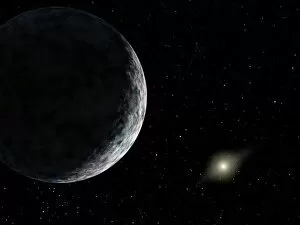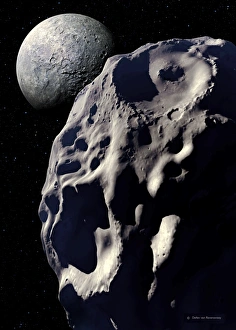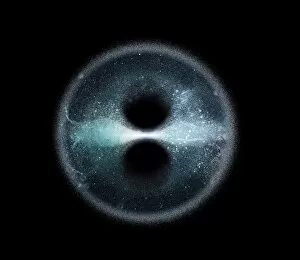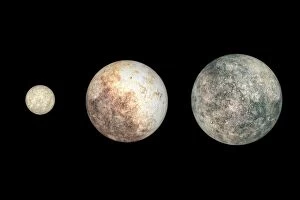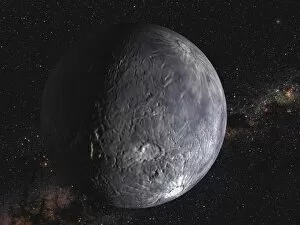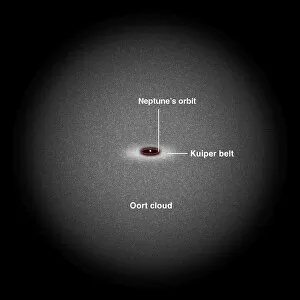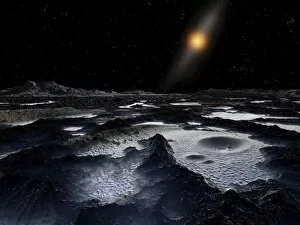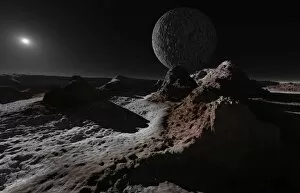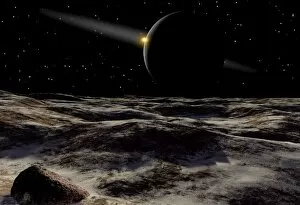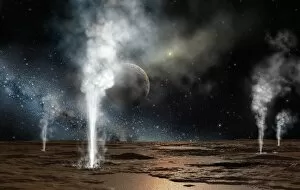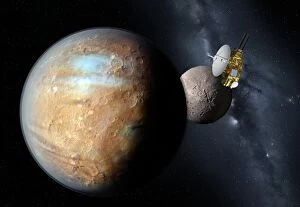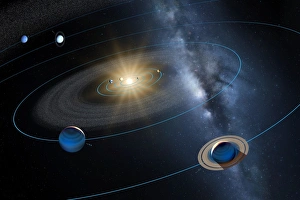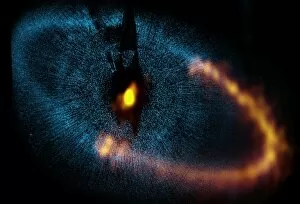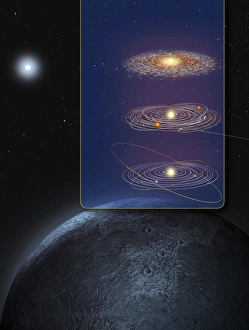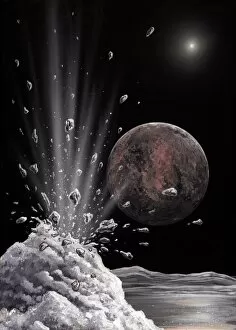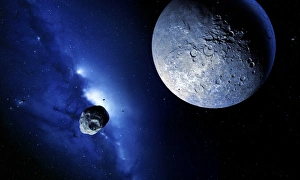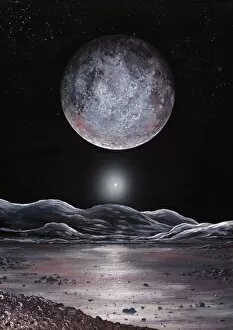Kuiper Belt Collection
The Kuiper Belt, a region beyond Neptune's orbit, is home to fascinating celestial objects that continue to captivate scientists and space enthusiasts alike
All Professionally Made to Order for Quick Shipping
The Kuiper Belt, a region beyond Neptune's orbit, is home to fascinating celestial objects that continue to captivate scientists and space enthusiasts alike. One such object is the dwarf planet Eris (UB313), which sparked controversy when its discovery in 2005 challenged Pluto's status as the ninth planet of our solar system. Intriguing artwork depicting the Kuiper Belt showcases its vastness and mysterious nature. Another artistic representation portrays the Oort cloud, a hypothetical sphere of icy bodies believed to exist even farther from the Sun than the Kuiper Belt. Eris, accompanied by its moon Dysnomia, stands out as one of the most significant discoveries within this distant realm. Its presence further solidified our understanding of dwarf planets and their importance in unraveling the secrets of our cosmic neighborhood. Renowned scientists like Dr. Ed Stone, Voyager project scientist, and Dr. Jim Green, Director of NASA's Planetary Division, have shared their expertise on panels discussing groundbreaking missions like "New Horizons. " These missions have allowed us to explore worlds beyond our imagination. During these panel discussions at "New Horizons, " audience members were treated to awe-inspiring images taken by Voyager spacecraft during its journey towards Neptune. These images served as a reminder of how far we've come in exploring outer space and fueled discussions about what lies ahead for humanity's quest for knowledge. Curiosity abounded among attendees who eagerly posed questions to panelists regarding various aspects related to these distant realms. The insightful responses provided by experts like Dr. Jim Green, Dr. Ed Stone, and Dr. Alan Stern shed light on ongoing research efforts aimed at uncovering more about dwarf planets and other enigmatic entities residing within the Kuiper Belt. Dr. Alan Stern specifically emphasized his role as New Horizons' principal investigator during these enlightening panel discussions at "New Horizons. " His dedication exemplifies humanity's relentless pursuit of understanding celestial bodies lurking in the depths of our solar system.

